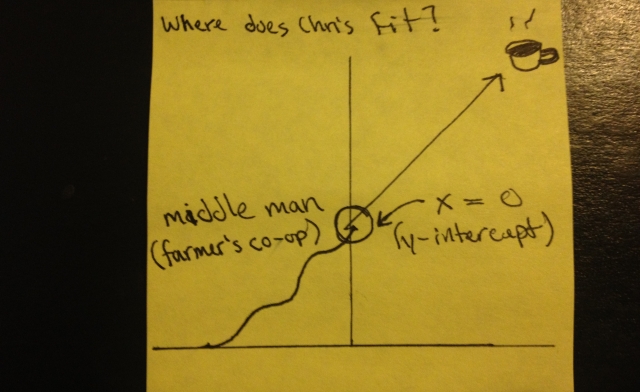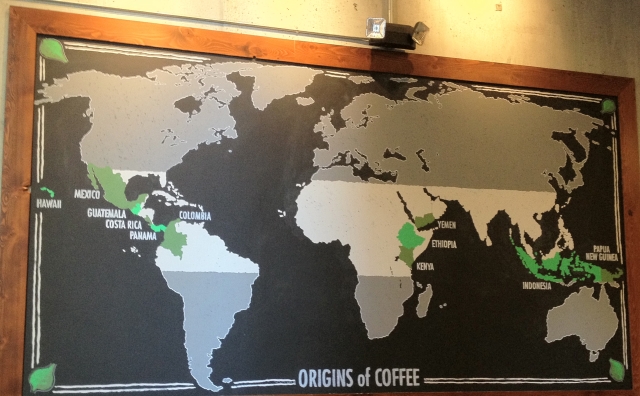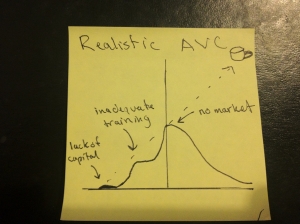Here we go

So it’s kind of a weird feeling. For about 6 months now I’ve know that I’d be going to ‘Africa’ this summer. At the end of February I got news that I’d be going to Ghana and I started getting used to that idea, for a few weeks at least! Then about two months ago (I remember it to the day, March 19th), after a flurry of emails and a phone call from my coach Lauren (think of a mix of your supervisor and best friend, at least that’s what she is to me!) I was going to Uganda this summer.
I think to best describe how life is right now I’ll get straight to the point. I feel like I’m in math class and I’ve been prepping for my final exam all semester, but for all I know I’m not even going to be writing a math test. Since January I’ve been working through some foundation learning to prep for the summer ahead and I’ve also been sitting down with past Engineers Without Borders (EWB) volunteers from my chapter back at Carleton for what we call ‘coffeeshop mentoring’. Currently I’m in Toronto where EWB’s national office is located for a week of pre-departure training and then in t-minus 36 hours (ahh!) I’ll be hopping on a plane and landing on the tarmac at Entebbe International Airport, about 50km from Kampala, the capital city of Uganda.
I’ll be spending my summer as a Junior Fellow (JF) in International Development working apart of EWB’s Agriculture Value Chains (AVC, there’s a lot of acronyms to learn!) team. Now, that’s probably not the most elaborate description so I imagine you’re probably wondering what I’ll actually be getting up to this summer.
“Hey Chris, what’re you going to be doing this summer?”
To be honest, every time I get asked this question it’s so hard to feel good about what the person on the other end is picking up from what I’m putting down. If I were in person I’d throw the question right back at you.
“What do you think I’ll be doing?”
“Digging a well? Building a school? Catching Kony?! ”
“Ohh boy, you got a couple minutes?”
Well, lets start with the basics and go from there. Currently on earth there are 7 billion people. Of that, its estimated that 925 million people (close to the amount of active users on facebook, to put it in context), or 1 in 7, are hungry (note: this term ‘hungry’ can vary drastically). Fun fact, the world currently produces enough food to feed everyone. We actually produce enough food for every person on earth to consume more than 2700 calories (well over the required daily amount) per day. In 2005, the World Bank estimated there were 1, 345 million people living on $1.25 a day or less. Do you think there might be any correlation between the 1, 345 million under the $1.25 line and the 925 million going ‘hungry’? I do. I also think there’s a lot of factors that play into this web of systems contributing to what’s more commonly known as poverty.
This is a pretty broad concept, so how about we take a look at something that gets affected by these systems. Lets say coffee for example.
“Whoa now, hold up Chris. How is the coffee that I’m drinking to stay alive during exam season get affected by systems that contribute to poverty around the world?”
“Well hold your horses, I’m getting there! Where does that coffee in your hand come from?”
“Starbucks!”
“Sigh.”
“Tim Hortons?”
“Oh yeah, eh? How about one more try?”
“Umm, the grocery store?”
Okay, so maybe I’m cheating a bit cause I’ve got this handy map right next to me in the Starbucks that I’m currently sitting in.
To make the story short, the coffee that ends up in your hand comes from all over the world. Lets push this idea a little further and look at how this comes to be.
Coffee is made from a bean (duh, no shit Chris!). Unlike money, it actually does grow on trees, or what my old friend Monty Python would call a small shrubbery. The bean (or grind) that you might buy actually goes through quite the journey, believe it or not. This journey is actually what’s called an agriculture value chain. Lets check out this journey I’m talking about.
Anything that would be on the input side, so when x < 0, are actions that are taken to increase the bean’s value pre-harvest, usually performed by a farmer or outsourced by the farmer who’s growing the coffee beans. This could be a range of things, for example paying a tractor service to plough their fields or using pesticides. Anything that would be on the output side, so when x > 0, are actions taken to increase the beans value post-harvest. The funny thing that they don’t tell you about math in high school is that graphs never actually turn out the way that they’re supposed to. In a lot of cases your f(x) = x (straight line) graph might end up actually looking a lot closer to something like this in real life, and the same goes for AVC’s.
You see, in reality this farmer might not actually be able to pay for a tractor to plough their fields, or they might not have the required training to know when and how to apply pesticides effectively. In a worst case scenario, the coffee beans that the farmer has invested so much time and resources into might not even have a buyer to sell it to. So let’s take another look at this graph and let me show you where I see myself coming into play.
There’s a crucial point on this graph where the coffee switches hands, usually through a middle man, and in turn for their crop the farmer would receive compensation. This is where I’m going to be embedding myself within the system, at x = 0, or the y-intercept. It’s at this point where EWB feels we have most control in terms of influencing this system. The AVC team believes in a market facilitation approach to ensure value chains are functioning optimally and creating markets for small-scale farmers to sell their crop.
More specifically this middle man I’ll be working with is a coffee farmers co-operative. This is a group of farmers who have organized together with the intention of bulking their crop and resources which allows small scale farmers to access markets that would normally be inexistent. Ultimately the intention is that by role modeling the market facilitation techniques that the AVC team strongly believes in other players will follow suit and create a ripple effect across multiple systems.
I’ll be spending the first part of my summer on a village stay with a farmer who’s a member of the co-op to gain a better understanding of coffee production and of the field realities that are being faced at the ground level. I’ll then be spending some time shadowing an extensionist who works with the co-op to maintain the relationship between the head office of the co-operative and the farmer members. By doing this I’ll be looking to better understand the current interactions the co-operative has with the farmers as well as their buying practices. Once I’ve gained this knowledge I’ll then be working directly with the head office of the co-operative with the intention of assessing their organizational capacity and searching for opportunities for growth, keeping in mind the realities that are being faced at the different levels of the system.
To be honest, having the opportunity to work on something of this scale is really quite humbling. Often I find myself asking what a 20-year old engineering student knows about growing coffee (especially as somebody who doesn’t drink any back home, I’ll admit I’m a tea addict!) or farmers co-operatives and wonder how I’ll be able to break down barriers that will allow me to integrate into this system and gain a true understanding. Building trust with those around me in Canada is something I find comes very naturally to me, but will this apply once I land on the ground? I guess I’ll just have to wait and see!
36 hours. Here we go.





great post chris, looking forward to getting you from the airport! safe travels!
Chris,
I have not a doubt your gregarious personality will draw people in and create connections the minute you start hand-gesturing (communication is 80%+ body language, after all). I really think all humans love connecting with others – someone just needs to make the first move (a big smile that you always seem to have will be all the invitation they need to start chatting up a storm).
A few questions I have – have the farmers interacted with NGOs before? With what results? How is it decided who will host you (is it dictated by status, whoever is able to host a guest, or something else?). Can you do one of those neat diagrams for how the farmers, extensionist agent, and cooperative interact with each other? I’m not clear on if the extensionist is an external hire, an NGO, a cooperative member, or something else. And is the cooperative not the group of farmers? Why does there have to be a relationship built between the cooperative and the farmers? How big is this cooperative?
Whew, that’s a lot of questions to throw at you! Answer them whenever you’re able to. Loving the pictures intermixed with the dialogue – if at all possible, it would be awesome to see a video at some point too 🙂
Can’t wait to hear about your journey!!
Leah
Looking forward to the next blog
Sweet blog! Can’t wait to follow the updates this summer. Be sure to post your contact info (phone numbers) ASAP! And is it possible to request a subscription bar on your blog so I can get emailed when you post new things?
Safe travels!!
Chris! I will also be online, following for your insight, knowledge and witticisms :P.
Awaiting your next post with anticipation! Good luck for the trip into the village — I’m looking forward to hearing your first impressions once you get there and learning more about the coffee co-op :). ALL THE BEST!
Mikhaela